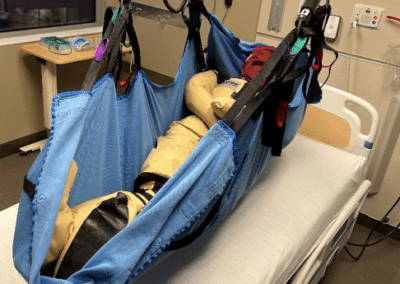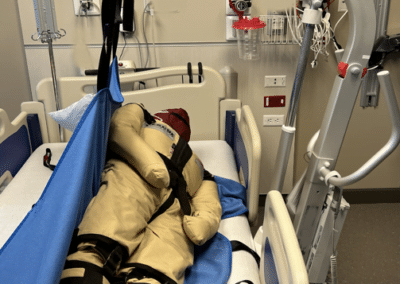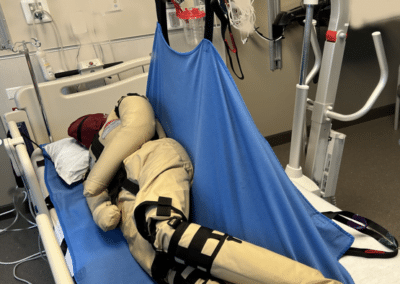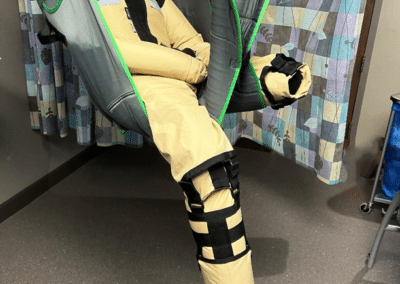The desire to help people by providing outstanding care is why you became a healthcare professional in the first place. Maintaining the dignity of your patients is important, as is maintaining your own health and well-being when carrying out your duties.
Healthcare workers are statistically at a higher risk of workplace injury than some other professions. Within the UK, it is estimated that approximately 80,000 nurses injure their backs at work resulting in costs in excess of £400 million caring for and sometimes replacing these workers.
According to the United States Department of Labour (https://www.osha.gov/hospitals) in 2019, U.S. hospitals recorded 221,400 work-related injuries and illnesses, a rate of 5.5 work-related injuries and illnesses for every 100 full-time employees. This is almost twice the rate for private industry as a whole.
Not only that but Sprains and Strains represent 54% of Hospital Worker injuries resulting in days away from work – indicating that daily tasks such as mobilization of patients pose a significant risk to healthcare professionals and highlight the importance of safe patient handling training.
Whilst Patient Handling manikins are becoming commonplace in the UK, we have recently been working with specialists in the US to test the potential to utilize manikins in American healthcare facilities. Lynda Enos, RN, BSN, MS, COHN-S, CPE, Ergonomist & SPHM Consultant based in Oregon, has been using a 50kg Patient Handling manikin for several months and has been looking for ways to integrate the manikin into training within a sim room.
Many hospitals appoint a SPHM Champion, who is responsible for overseeing the training of staff and facilitating how this training is conducted. Lynda said,
“Using the manikin allows me to conduct 1-to-1 training with new trainers and/or SPHM champions. Trainers can really get to use slings and lifts in so many ways without fear of hurting a ‘live’ person.
They also get to see how slings ‘behave’ when attached in a variety of ways to different styles of lift hanger bars e.g. 2, 4 pt; XY, H etc. This helps to quickly gain competency in the safe use of the equipment and understand the potential harm to a patient if the equipment is not used correctly.”
Of course, certain SPHM tasks present more risk and deserve additional training. Lynda agreed that using the Patient Handling manikin was useful for more complex training such as learning to prone a patient using an overhead lift or other SPHM technology (no fear of hurting a live person), transferring a patient with bilateral above knee amputation (thanks to the design of the manikin which features detachable limbs for amputee training scenarios), and fall recovery using a variety of lift equipment.
Lynda said,
“The manikin has also allowed me to trial new SPHM technology and slings without needing extra staff help, which is challenging given current staffing demands – I can take all the time I need to evaluate how a new device will perform and how users may misuse it without the fear of injuring a ‘test’ subject. After this type of evaluation, I can then ask staff to trial a device. It therefore reduces the number of staff and amount of time needed for initial SPHM device trials.”
“Realism is very important in order to facilitate the transfer of training – especially when you are training staff from units and departments with a wide variety of patient populations. I have found the manikins especially useful for teaching skills for mobilization of dependent patients e.g., passive lifting and transfer tasks conducted with floor-based and overhead lifts, and a variety of slings types; friction-reducing devices; and air assist mats, etc. I would absolutely recommend the use of Patient Handling manikins to other SPHM professionals.”
At Ruth Lee ltd we are committed to helping improve the statistics on injury within the health care system, by providing manikins for effective SPHM training. Find out more about our Patient Handling manikins HERE or if you are based in the US, visit our Distributor Rescue Technology




